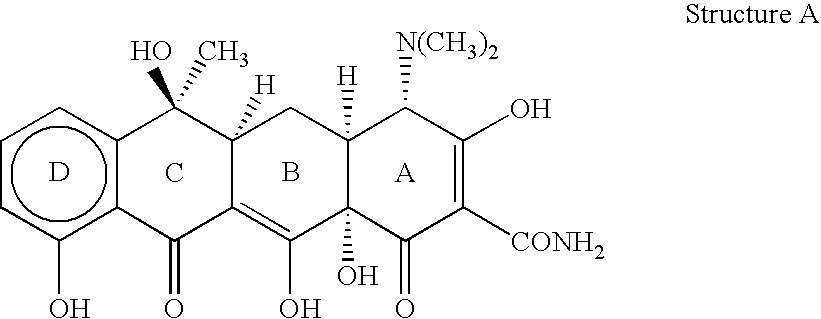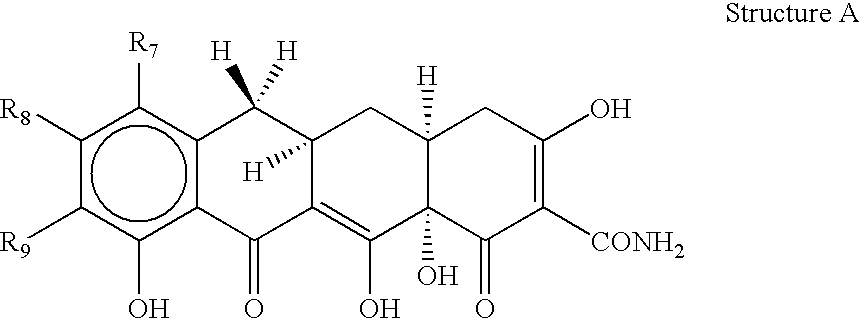Use of non-antibacterial tetracycline analogs and formulations thereof for the treatment of bacterial exotoxins
a technology of tetracycline and analogs, which is applied in the direction of antibacterial agents, antibacterial agents, antinoxious agents, etc., can solve the problems of increased risk of antibiotic-resistant bacterial strains, increased antibiotic-resistant bacterial strains, and sudden onset of hyperacute illness, so as to achieve the effect of not exposing to antibiotic resistan
- Summary
- Abstract
- Description
- Claims
- Application Information
AI Technical Summary
Benefits of technology
Problems solved by technology
Method used
Image
Examples
Embodiment Construction
[0025]The invention relates to treating conditions associated with a bacterial exotoxin with a tetracycline derivative. Tetracycline derivatives, for purposes of the invention, may be any tetracycline derivative.
[0026]In one embodiment of the invention, antibacterial tetracycline compounds are administered in a non-antibacterial amount. For this embodiment, the tetracycline derivative may be any such derivative having clinically significant antibacterial activity. Some examples of antibacterial tetracycline derivatives include tetracycline, as well as the 5-OH (oxytetracycline, e.g. Terramycin™) and 7-Cl (chlorotetracycline, e.g., Aureomycin™) derivatives, which exist in nature, are employed. Semisynthetic tetracyclines, which include, for example, doxycycline, minocycline and sancycline, can also be used for this embodiment.
[0027]The amount of a tetracycline compound that has substantially no antibacterial activity is an amount that does not significantly prevent the growth of bact...
PUM
| Property | Measurement | Unit |
|---|---|---|
| time | aaaaa | aaaaa |
| antibiotic resistance | aaaaa | aaaaa |
| structure | aaaaa | aaaaa |
Abstract
Description
Claims
Application Information
 Login to View More
Login to View More - R&D
- Intellectual Property
- Life Sciences
- Materials
- Tech Scout
- Unparalleled Data Quality
- Higher Quality Content
- 60% Fewer Hallucinations
Browse by: Latest US Patents, China's latest patents, Technical Efficacy Thesaurus, Application Domain, Technology Topic, Popular Technical Reports.
© 2025 PatSnap. All rights reserved.Legal|Privacy policy|Modern Slavery Act Transparency Statement|Sitemap|About US| Contact US: help@patsnap.com



